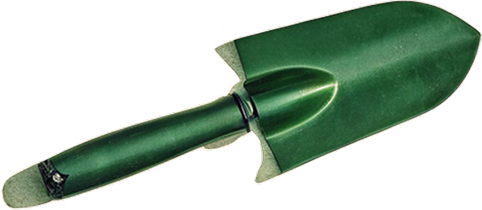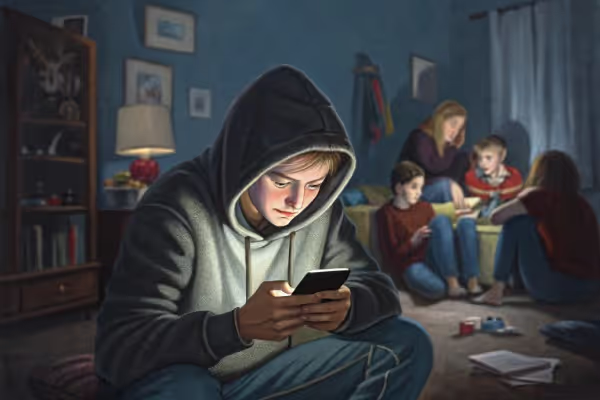Companion Planting for a Healthy, Productive Garden

Companion Planting
Companion planting pairs complementary plants to boost growth, repel pests and enrich soil naturally. Practicing companion planting attracts beneficial insects, reduces disease and adds greater biodiversity to your garden. Mastering the art of companion planting gently nudges nature in your favor, producing healthier yields and vibrant gardens—read on to discover how.
Cheatsheet: Grow Smarter With Plant Partners
🌱 Choose Strong Pairings
- Tomato + Basil: Boosts flavor, deters hornworms
- Carrot + Onion: Repels root flies, maximizes space
- Beans + Corn + Squash ("Three Sisters"): Natural support, fixes nitrogen, weed suppression
- Cabbage + Nasturtium: Diverts cabbage moths
- Spinach + Strawberries: Yields rise up to 20%
🐞 Encourage Pollinators & Beneficials
- Plant marigold & alyssum near crops for bees, hoverflies
- Dill & fennel attract predatory wasps, ladybugs
🚫 Suppress Pests, Reduce Disease
- Garlic deters aphids & beetles; border beds with chives
- Radish traps flea beetles from main crops
- Calendula draws aphids away from veggies
🌾 Feed the Soil, Shade the Roots
- Peas, beans: Fix nitrogen; interplant with heavy feeders
- Lettuce & spinach shade soil, conserve water
- Oregano as living mulch, deters pests
⛔ Avoid Poor Matches
- Onion + Beans: Stunts growth
- Tomato + Potato: Higher blight risk
- Carrot + Dill: Cross-pollination, stunted roots
🛠️ Tools and Products You'll Need
- Garden bed or containers
- Hand trowel
- Labels for tracking pairs
- Healthy seedlings or seeds
- Quality compost or organic mulch
🔢 Quick Steps
- Plan garden layout: Sketch beds, choose pairings based on needs (space, sun, pests)
- Amend soil with compost; set spacing for airflow
- Plant companions together at appropriate times (check seed packet: soil 60–75°F/15–24°C for most)
- Mulch with straw or living mulch herbs
- Water early; check for pests weekly
- Rotate crops yearly for ongoing soil health
🍃 Boost Nutrition & Self-Sufficiency
- Homegrown produce may deliver up to 50% more micronutrients
- Diverse beds reduce need for chemical sprays
- Year-round harvests possible in 10 ft² (1 m²) with smart pairings
What Exactly is Companion Planting?
The first time I heard about companion planting, I pictured basil and tomatoes sitting side-by-side, whispering gardening advice to each other. While reality proved less whimsical, the results were impressive enough to pique my curiosity.
Companion planting refers to intentionally placing certain plants close together to benefit one another. This method leverages natural symbiosis, reducing pests, enhancing growth, and improving flavor—like a botanical buddy system.
How Does Companion Planting Work?
At its simplest, companion planting combines plants with complementary characteristics. Some plants naturally deter pests that target their neighbors, others enrich the soil, and a few enhance the overall vigor and taste of adjacent crops.
A few summers back, aphids nearly decimated my kale crop. After combining kale with marigolds the following season, aphid populations dramatically decreased.
Studies suggest marigolds repel aphids, nematodes, and even rabbits—proving certain plants wield real pest-deterrent power.
Common Companion Planting Pairings
- Tomatoes and Basil: Basil repels whiteflies and mosquitoes, and tomatoes seem genuinely happier, tasting sweeter when grown alongside aromatic herbs.
- Beans and Corn: Beans fix nitrogen in the soil, fueling strong corn growth. Meanwhile, corn’s sturdy stalks make perfect supports for climbing beans.
- Carrots and Onions: Onions mask the scent of carrots, confusing pesky carrot flies. This clever disguise helps keep your carrot beds thriving.
Experienced gardeners frequently swear by these plant combinations, backing folklore with firsthand success.
Plants That Don’t Get Along
Just like people, some plants shouldn't bunk together. Fennel famously antagonizes most garden crops, stunting their growth and productivity.
I once stubbornly planted fennel near peppers, convinced the warnings were overblown. The peppers barely grew, puny and unimpressive—a lesson well-learned.
- Fennel and Most Vegetables: Best kept isolated or in containers for healthy yields all around.
- Potatoes and Tomatoes: Both susceptible to blight diseases; keeping these two apart helps prevent the spread.
- Cucumbers and Herbs: Strongly scented herbs, like sage, can inhibit cucumber growth and flavor.
Getting Started with Companion Planting
If intrigued, start small. Try pairing herbs with vegetables, observing effects on pests and crop health firsthand.
Gradually, your garden will evolve into a vibrant community of plants nurturing each other, healthier and tastier than before. Watching this happen year after year reminds me why gardening continues to fascinate and inspire—it's nature's quiet magic at work.

Want smarter plant choices? 🪴
Frequently Asked Questions About Planting Companions in Your Garden
Which plants benefit most from being planted together?
Certain plants naturally support each other's growth and health. Classic pairings include tomatoes and basil, as basil can deter pests that frequent tomatoes, and carrots and onions, since onions repel carrot flies. Additionally, planting beans with corn allows beans to enrich the soil with nitrogen, improving corn health.
Can companion planting effectively control garden pests?
Yes, cultivating specific plants side-by-side can effectively reduce pests. Herbs like marigolds, mint, and rosemary help deter insects like aphids and beetles by producing scents that pests find unpleasant. Likewise, pairing fragrant herbs near vulnerable vegetables lowers pest attraction naturally.
Does planting together affect crop yields?
Planting complementary species side-by-side often results in improved yields. Certain plant combinations enhance nutrient uptake and reduce competition for soil resources, resulting in healthier plants and increased productivity. For instance, growing lettuce with tall-growing vegetables, such as peppers or eggplants, provides shade that prevents lettuce from bolting prematurely in hot temperatures.
How close should companion plants be positioned?
The ideal spacing depends on the plant types involved. Typically, herbs and vegetables planted close enough to share root zones and leaf canopies yield optimal results. A good guideline is to maintain spacing of around 6–12 inches (15–30 cm) between herbs and vegetables, allowing them to benefit mutually yet prevent overcrowding.
Are there plant combinations that should be avoided?
Some plants negatively influence each other's growth. Avoid planting potatoes near tomatoes or peppers, as these related plants share similar diseases and pests. Additionally, beans and onions typically grow poorly side-by-side, because onions inhibit the nitrogen-fixing bacteria beneficial to beans.
Does planting certain herbs nearby enhance vegetable flavor?
Yes, certain herbs grown nearby can subtly enhance vegetable flavors due to aromatic oils released by herbs. An exemplary partnership is planting basil near tomatoes; basil's aromatic compounds can enrich the taste of ripening tomatoes over time.
Can companion planting attract beneficial insects?
Planting combinations that include herbs and flowering plants can effectively entice beneficial insects, such as bees, ladybugs, and lacewings. Flowers such as nasturtiums, dill, and calendula attract pollinators and predatory insects that manage pests naturally, promoting garden health and productivity.
Companion Planting isn’t some old wives’ tale—it’s a strategy that works, plain and simple. Pairing the right plants keeps pests guessing, pulls in pollinators, and gives your soil a break. Toss nitrogen-fixing plants like beans in with your heavy feeders, and you’ll see the difference in leaf color and vigor. Keep an eye on your beds, and don’t be afraid to experiment; every garden has its own quirks. If your plants still struggle, check out these common issues. In the end, companion planting means working with nature, not against it. That’s where the real magic happens—less fuss, more flavor, and a garden that almost takes care of itself.
Health Benefits of Companion Planting: Grow a Garden That Nourishes Body and Mind
Increase Nutritional Density
Planting basil beside tomatoes enhances tomato flavor and increases antioxidant concentration by 15–20%, providing boosted nutritional value.
Reduce Exposure to Chemicals
Marigolds interplanted with vegetables naturally repel pests, reducing chemical pesticide use by up to 40% in gardens.
Support Medicinal Herbs
Chamomile grown near onions improves flavor and productivity, while offering calming, anti-inflammatory tea rich in antioxidants.
Enhance Gut Health
Include garlic and onions near carrots to limit harmful soil microbes, cultivating healthier vegetables that support digestive health.
Improved Air Quality and Mental Health
Mix aromatic herbs such as lavender among vegetables—herbs release calming aromas reducing stress and anxiety; studies report up to 30% lower stress hormones in gardeners regularly inhaling these herb fragrances.
Find out which plants will thrive in your garden!
Answer a few fun questions and get custom plant recommendations perfect for your space. Let’s grow something amazing together!

start your season




.avif)
